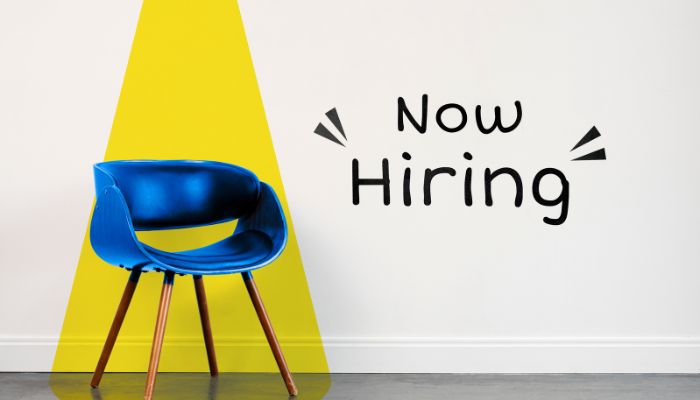Modern businesses face uncertainties spanning economic situation, political changes and the ever changing technology. These uncertainties throw up challenges as well as opportunities. One of the biggest challenges for business leaders to address is whether they have agile workforce that can adapt to these uncertain situations.
Agility in the workforce is a requirement that can no longer be ignored in view of faster turnaround of product life cycles and ever changing customer expectations. Businesses that do not demonstrate organizational agility are doomed to fade away as they are unprepared to anticipate and address tomorrow’s challenges.
The moot question is: how many businesses can be considered agile organizations today?
In a survey done by Kelly Outsourcing and Consulting Group in 2018, it was found that 2 in 3 businesses in the Asia Pacific region did not possess organizational agility needed to adapt to change.
More worrying was the finding that 2 in 5 business leaders felt that they were not equipped for agile workforce planning. The survey also mentioned that the permanent workers will no longer stay in their jobs for more than 3 years and that the percentage of gig workers is already high and contractual work is becoming mainstream now.
The looming presence of technological innovations like analytics and AI is going to change business and workplace in ways that cannot even be imagined today.
You might also be interested to read: Tips And Tricks To Build A Curious Workforce
To navigate these uncharted waters, HR must become a stakeholder, a strategic partner in the business strategy of an organization. Only then HR can effectively render agile workforce management. It is worrying that very few companies engage with HR functions in the nascent stage of business strategy development. This needs to change. HR must be proactive and keep business goals in mind in order to prepare an agile workforce fit to take on challenges thrown at it.
What exactly is workforce agility? It is an organization’s ability to adapt to change by altering its direction. An agile organization is possible only if its workforce can adapt to the changes in business quickly. According to Emily Lundi-Mallett, Executive Director of Ingram Micro, a 30,000-employee tech company, in order to have agile workforce, companies need to focus on employees’ mindsets. Employees’ mindsets are the prisms that help them understand work experiences and propel their actions. Their thought process, ability to learn and adapt and behavior all are dictated by their mindsets.
If an organization wants to increase agility in the workforce, it needs to pay attention to the fact that its workforce possesses mindsets that are not threatened by change. Its employees must have mindsets that view change positively, only then they will respond and adapt to change to work effectively.
The first step in this direction is to understand the existing mindset of its employees to know where they are at present and what needs to be done to have the most appropriate mindsets for workforce agility.
Business leaders often do not take into account employee mindsets during periods of change simply because of their inability to know the kind of mindsets they need to encourage and promote to improve workforce agility.
The three mindsets necessary for an agile workforce are:
Growth mindset – when employees believe that they can change their talents abilities, they have a growth mindset, opposite of fixed mindset when they think that they cannot change.
Open mindset – employees with open mindsets listen to others and take others’ views and ideas seriously. Employees with closed mindsets shut out others’ ideas however effective they might turn out to be.
Promotion mindset – a promotion mindset allows employees to concentrate on success and winning even if some risks need to be taken. On the other hand, a prevention mindset makes people work on avoiding problems and focuses on simply not losing.
You might also be interested to read: Purpose Of Education – Is It Just A Mere Tool For Entering The Workforce?
Once the HR understands the nuances of agile workforce, a thorough agile workforce management needs to be put in place.
For a future ready agile organization, HR must actively engage with business strategy. Business figures and business decisions that influence its top and bottom line must be studied carefully by the HR. The HR needs to work with business heads on objectives of the organization in order to deliver what is needed in terms of organizational agility. Such close co-operation can transform the business. Thus, HR needs to engage deeply at the level of operational planning and not just operational execution or business support level. In other words, HR needs a place on the strategic table.
HR and TA (turn around) professionals must work on understanding the changing business requirements of a company and re-evaluate the roles completely. Mere replacement of roles is not enough. For example, a full-time on-site role can be re-imagined as two different remote workers. Of course necessary precautions like review and monitoring system should also be put in place to really gain from such agile arrangements.
Modern workplaces having diverse workforce require multiple HR policies for different employee groups. All of them also require regular review and analysis to see what works and what does not. Organizational agility largely depends on its HR policies. HR, therefore, has this great responsibility to see that its people policies support organizational goals. Use of technology is transformative in agile workforce management. HR has to take a leading role in designing and using technology driven tools to enhance productivity and efficiency. Continuous experimentation with new technologies is not only important but imperative along with thoughtful human interventions. For example, chatbots can be used for short-listing and identifying candidates but a real human has to finally talk to the candidate to make the final call about hiring him or her.
To conclude, agile workforce management can be achieved when HR and TA understand business and figures, only then HR can work together with business to achieve business goals. HR needs to win business leaders’ trust by understanding and speaking business language.
HR also needs to lead from the front as far as learning goes. Constant learning is the key to maintaining agility in the workforce. HR needs to challenge the status quo all the time to bring value to the organization. Business-first HR leaders require a mindset re-orientation themselves to be agile.
References:
- Here is how to create an agile workforce. Rucha Kulkarni. 8th 0ct 2019
- How to develop an agile workforce. Ryan Gottfredson. 4th Jan, 2019
Related Topics:






